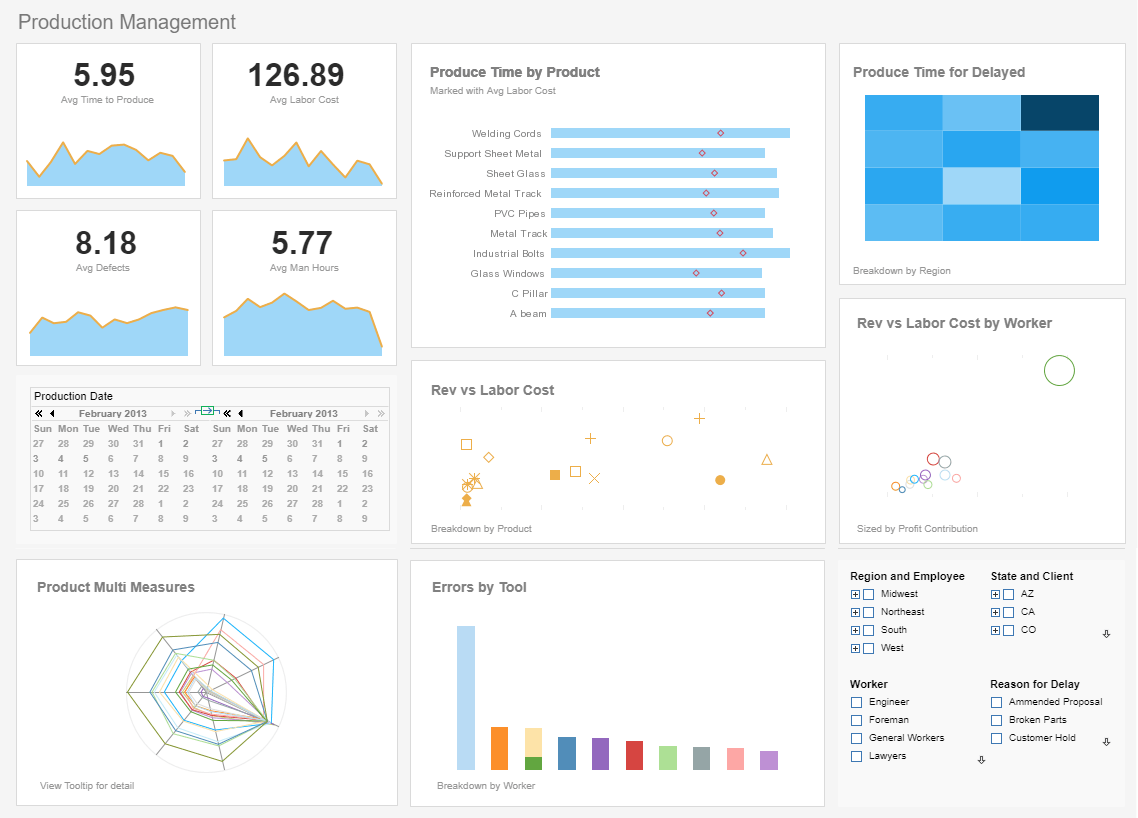Structural View of Proactive Performance Management Environment
This is the continuation of the transcript of a Webinar entitled, "Knowledge Driven Performance Management” hosted by InetSoft. The speaker is Christopher Wren, Principal Consultant at TFI Consulting.
Once again, starting at the left hand side, clearly leadership is important in terms of establishing strategic goals. You know the alignment, the managing for change, and the team leads that are responsible for working in this area. So you can see in the left hand side we have key individuals.
In the middle, we have key processes and then we have the operational feedbacks of setting and establishing performance goals of those measures that we’re interested in.
As you move down, you’re also able to review the knowledge repository and those assets. Then you’re able to map those assets to the performance indicators while doing it in an automated fashion so that it doesn’t have to be done manually but automatically so that the information and the linkage between the key performance indicators and knowledge assets are dynamic in nature.
So as new knowledge assets are added, they can be dynamically linked, ranked, and associated with key performance indicators allowing that to flow down to the performance analysis itself.
| #1 Ranking: Read how InetSoft was rated #1 for user adoption in G2's user survey-based index | Read More |
Teams Link Performance Indicators
So these would be the key individuals involved. The knowledge management team as well as the performance management team would lead some of the activities like linking performance indicators with those knowledge assets and the operational side of that in terms of providing feedback for strategies and goals, as well as supporting the underlying knowledge assets.
This is going down to another level of detail. This is now at the level of what this would look like operationally from a systems point of view. We’re down into operational systems, but this is typically how this has been implemented for several of our clients.
Once again, across the top, you can see it’s generally a flow of activities starting with leadership, defining strategy, and goal maps. So you can see communities of interest across the top with core functions that are performing at different points in this grouping of systems or valued chain and at the bottom are various tools and techniques.
 |
View a 2-minute demonstration of InetSoft's easy, agile, and robust BI software. |
The Top and the Bottom of Strategy Alignment
The bottom involves leadership setting, strategy and goals, and aligning those with corporate objectives, which get documented as part of the charter of the organization or the business plans. Team leads identify performance metrics, various thresholds, the frequency that these will be measured at, the metrics, their weights, and anything that has to do with the metrics library.
Data management is used for the actual cataloging of the knowledge assets by linking those to the key performance indicators. Performance analyses are then used to, on a regular basis, identify what those indicators are and what the trends are associated with it.
Moving further down the chain, we get to the point where Jack is identifying where he and his team need to improve their performance and then linking that back or allowing them to use the knowledge assets from the performance management tool to effectively improve their performance, or at best, allow them to identify where they may have performance problems before it becomes a serious issues.
In terms of a more detailed view of what this would like from an implementation perspective, we have here across the top the variety of tools that we might use for managing corporate performance metrics.
Once again, the performance soft views tool is what we’ve been using. On one side is the performance hierarchy. On the other of that is the briefing book view that allows a senior executive to manage performance metrics.
On the left hand side there’s various government capabilities for being able to establish what those performance metrics are, administer and manage the underlying data assets, and track and manage those various assets.
Read what InetSoft customers and partners have said about their selection of Style Scope for their solution for dashboard reporting. |
The Knowledge Driven Performance Management Database
In the middle is the knowledge driven performance management database. That’s the integrated database of metrics along with links to all of the different knowledge assets in our organization, the people in our organization that have that knowledge, as well as links to external assets.
As we try and get a little more sophisticated about this, instead of just linking performance metrics with assets through very simple keyword matches or keyword searches, it’s possible to take an approach that is more driven by the vocabulary of a particular domain, and in some cases what we would call semantic technology.
| Previous: Linking Performance Management and Knowledge Management Assets |



